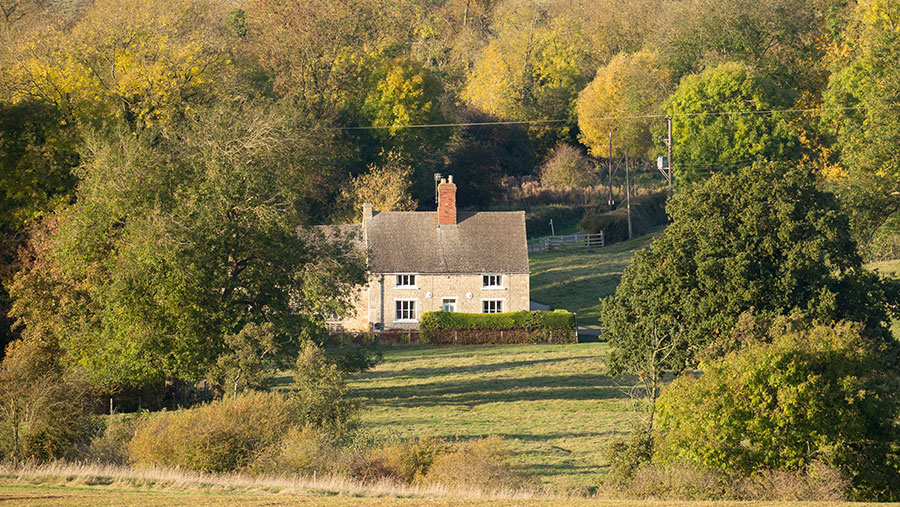Business Clinic: Tax considerations for farm cottages
 © Tim Scrivener
© Tim Scrivener Whether you have a legal, tax, insurance, management or land issue, Farmers Weekly’s Business Clinic experts can help.
In this article, Lisa Oliver, senior manager at Hazlewoods, offers advice on the tax implications of different options for vacant farm cottages
Q A pair of farm cottages have become vacant after 40 years of occupation by former farm employees who worked for our farming partnership and I am wondering what my options now are for them?
A You have several main options – renting, letting as holiday accommodation or sale of the cottages.
Income from Furnished Holiday Lets (FHL) or renting on an Assured Shorthold Tenancy (AST) would be subject to income tax at 20%, 40% or 45%, depending on other levels of income, and certain expenses will be allowable against the income earned from the cottages. The VAT treatment, however, varies.
 Lisa Oliver
Lisa OliverSenior manager, Hazlewoods
For Inheritance Tax purposes, if the property is rented out as a FHL or on an AST, then as long as the partnership is still predominantly a trading business, and the properties are a partnership asset, the property should qualify for Business Property Relief under the current rules and would not be subject to Inheritance Tax.
See also: Business Clinic: How best to use capital tax allowances
AST
Rental income from residential properties is an exempt supply for VAT purposes.
Input VAT can generally only be recovered where an entity is making a taxable supply (standard or zero-rated).
Renting out the properties on an AST would mean the partnership would become partially exempt, and consideration would need to be given to whether any of the input VAT on any of the repair costs was recoverable under the de minimis rules.
The basic rule is that input VAT on expenditure to generate exempt supplies cannot be recovered unless the total amount of exempt input VAT is below the partial exemption limits. Broadly, a VAT registered business can recover up to £7,500 of exempt input VAT in any one VAT year, as long as this amount is less than the taxable input VAT for the business.
Given this, where a property is going to give rise to exempt supplies it is particularly important to minimise the input VAT cost.
Work to a residential property that has been unoccupied for more than two years will incur VAT at the reduced rate of 5% and where the number of dwellings in a property changes then the work involved can also be supplied at the reduced rate of 5%.
Any repairs would qualify as a deduction for income tax. Any improvements to the properties will be capital expenditure and, unfortunately, will not qualify for income tax relief.
If any borrowing is attributable to these properties and they are rented out on an AST, then tax relief will be reduced for a higher rate taxpayer so that by 2021 interest will only qualify for basic rate tax relief.
FHL
FHL rental income is a standard-rated supply for VAT purposes. If the property renovation was to be undertaken within the VAT registered farm partnership, all input VAT would be recoverable.
As with the AST, repairs would be tax-deductible and any improvements would be treated as capital expenditure, although capital allowances may be available on any furniture, white goods and integral features, eg. electrical installation.
The farming business would have to charge output VAT on the furnished holiday let income and this would be a cost to customers as they will be unable to recover the VAT.
If the FHL business was run separately to the farm partnership, then provided the new FHL business is not VAT registered and does not breach the annual VAT registration turnover threshold of £85,000, output VAT would not have to be charged to the customers, although no input VAT would be recoverable on the repairs and renovations.
The property could be rented on an AST to the separate FHL business (eg. family member sole trade) and provided there are no planning regulations that stipulate the properties must be used as a FHL then the farming business would not have to charge output VAT on the rental to the FHL business.
The input VAT recoverable on the renovations would then be on the same basis as if it were an AST.
Selling properties
If the properties were to be sold in order to generate cash, then any gain on the sale would be subject to capital gains tax (CGT).
Each individual in the partnership has an annual exemption of £11,300 on which no tax would be paid, provided there have been no other capital gains in the year.
The standard rate of capital gains tax is now 28% for residential property, although some of the gain may be taxed at 18% if this falls within an individual’s basic rate tax band.
As the cottages have been occupied by farm workers, and would therefore be considered as business assets, any gain could be deferred by rolling over into the purchase of farmland, new farm buildings or other eligible business assets.
However, all the proceeds would need to be reinvested in order to reduce the tax bill to nil. Stamp duty land tax (SDLT) would be payable by the buyer.
Do you have a question for the panel?

Outline your legal, tax, finance, insurance or farm management question in no more than 350 words and Farmers Weekly will put it to a member of the panel. Please give as much information as possible.
Send your enquiry to Business Clinic, Farmers Weekly, RBI, Quadrant House, The Quadrant, Sutton, Surrey SM2 5AS.
You can also email your question to fwbusinessclinic@rbi.co.uk
